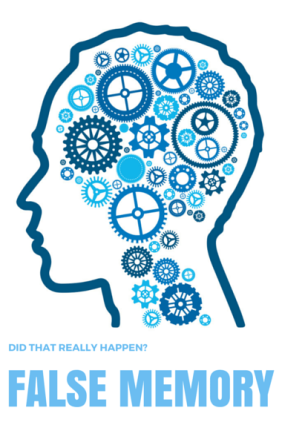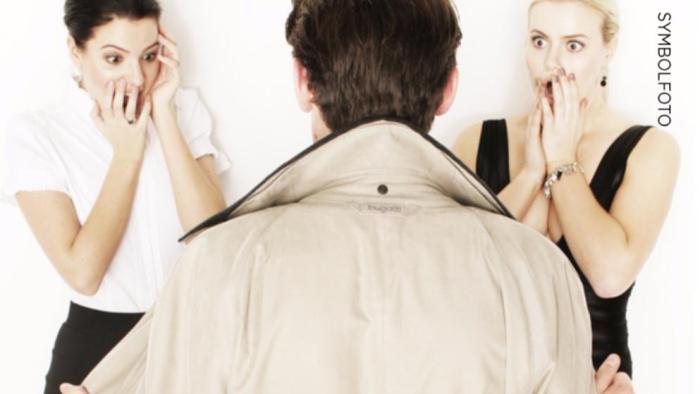Summary
It is widely recognised that the Christian religion could not have emerged without the first Christians experiencing the risen Christ after his death on the cross. These appearances are considered as hallucinations by secular scholars. Mass sightings of Jesus are problematic, however, as collective hallucinations are unknown to clinical psychologists. The world-renowned Biblical scholar Bart Ehrman proposed they can be accounted for through one person hallucinating Jesus and thereafter inducing false memories of having had the same experience in the mind of all other people present at the event. I argued that the experimental evidence presented by Ehrman is totally inadequate to show this is a plausible scenario. It is very unlikely that the testimony of the hallucinating person would be sufficient to make hundred of other persons “remember” having seen and heard Jesus if they had had no such experiences at the time of the gathering.
Introduction
Those of us who have an interest in unusual, paranormal phenomena that seem to question and event contradict the modern scientific paradigm know there are incidents where a whole group of people pretend to have witnessed something that isn’t supposed to exist.
One good example are the visions of Fatima where groups of people saw on several occasions strange phenomena they attributed to the Virgin Mary.

One other example of great importance to the philosophy of religion is the sightings of the risen Jesus after his humiliating death on the cross.

According to the apostle Paul, Jesus “appeared to Cephas, and then to the Twelve. After that, he appeared to more than five hundred of the brothers and sisters at the same time, most of whom are still living, though some have fallen asleep. Then he appeared to James, then to all the apostles, and last of all he appeared to me also, as to one abnormally born.”
The problem is that we have no evidence whatsoever that two (let alone 200) brains can produce the same hallucination at the same time. The corresponding psychological literature just doesn’t exist. In that case, I think that the absence of evidence is evidence of absence. If collective hallucinations were real, we would have (in 2017) many reports from mental health specialists describing their occurrences in their patients.
What is more, all examples of putative mass hallucinations beg the question by assuming from the outset there are no paranormal phenomena.
Can a person’s hallucination create false memories in other people’s mind?
Bart Ehrman is a renowned secular Biblical scholar who aims at explaining the beginning of Christianity in purely naturalistic terms, i.e. without appealing to any miracles he views as incredibly improbable by definition.
Whilst he seemingly first defended the idea that Jesus’ apparitions were due to collective hallucinations, he backtracked from this position in a later blog post.
Instead, he proposed that such alleged mass sightings (and the reports thereof) are produced from a combination of a single individual experiencing a hallucination with the false memories stemming from the contamination of the minds of other people who were present with him at that time.
For starters, false memories are seemingly real memories that actually do not correspond to what truly happened.
Following the great psychologist Elisabeth Loftus, I find it useful to make a distinction between “ordinary” false memories and “big” (or “radical”) false memories.
“Ordinary” false memories are basically your misremembering things about a real event without distorting its main features. Examples can concern the colour of a car that sped away from the police, the physical appearance of a rapist or having watched a movie about a real catastrophe even if you didn’t.
“Big” false memories, on the other hand, mean that you have memories about an event that never happened, neither to you nor to anyone. Examples are memories of being the victim of satanic rituals, alien abductions, or more mundanely of having been sexually abused by one’s parents even though this never happened.

Granted, that distinction is not sharp and there is certainly a smooth transition between both categories. But I find it useful nonetheless. As I argued in another post, whilst “banal” false memories are widespread, “radical” false memories are much less likely to emerge spontaneously. In the overwhelming majority of cases, the latter are spawned by (conscious or unconscious) psychological manipulation such as the assertion by a person of authority that the event (e.g. getting lost in a mall as a child) happened and that she is in a position to know this.
Bart Ehrman’s argumentation
Bart Ehrman begins by presenting a well-known Dutch study exemplifying the emergence of spontaneous false memories.
On October 4, 1992, an El Al Boeing 707 that had just taken off from Schipfol Airport in Amsterdam lost power in two engines. The pilot tried to return to the airport but couldn’t make it. The plane crashed into an eleven-story apartment building in the Amsterdam suburb of Bijlmermeer. The four crew members and thirty-nine people in the building were killed. The crash was, understandably, the leading news story in the Netherlands for days.
Ten months later, in August 1993, Dutch psychology professor Hans Crombag and two colleagues gave a survey to 193 university professors, staff, and students in the country. Among the questions was the following: “Did you see the television film of the moment the plane hit the apartment building?” In their responses 107 of those surveyed (55%) said Yes, they had seen the film. Sometime later the researchers gave a similar survey with the same question to 93 law school students. In this instance, 62 (66%) of the respondents indicated that they had seen the film. There was just one problem. There was no film.
These striking results obviously puzzled the researchers, in part because basic common sense should have told anyone that there could not have been a film. Remember, this is 1992, before cell phone cameras. The only way to have a film of the event would have been for a television camera crew to have trained a camera on this particular apartment building in a suburb of Amsterdam at this exact time, in expectation of an imminent crash. And yet, between half and two-thirds of the people surveyed – most of them graduate students and professors – indicated they had seen the non-existent film. Why would they think they had seen something that didn’t exist?
Even more puzzling were the detailed answers that some of those interviewed said about what they actually saw on the film, for example, whether the plane crashed into the building horizontally or at vertical and whether the fire caused by the plane started at impact or only later. None of that information could have been known from a film, because there was no film. So why did these people remember, not only seeing the crash but also details about how it happened and what happened immediately afterward?
Obviously they were imagining it, based on logical inferences (the fire must have started right away) and on what they had been told by others (the plane crashed into the building as it was heading straight down). The psychologists argued that these people’s imaginations became so vivid, and were repeated so many times, that they eventually did not realize they were imagining something. They thought they were remembering it. They really thought that. In fact they did remember it. But it was a false memory. Not just a false memory one of them had. A false memory most of them had.
The researchers concluded: “It is difficult for us to distinguish between what we have actually witnessed, and what common sense inference tells us that must also have been the case.” In fact, commonsense inference, along with information we get by hearsay from others, together “conspire in distorting an eyewitness’s memory.” Indeed “this is particularly easy when, as in our studies, the event is of a highly dramatic nature, which almost by necessity evokes strong and detailed visual imagery.”

This was a memory of a large group of people who all remember seeing the same thing (or nearly the same thing) at the same time, even though none of them saw it. If you don’t want to call that a group vision, that’s absolutely fine with me. What I’m saying is that a group of people thought they saw something they didn’t see. (The difference in this example, of course, is that the people in this study were not all standing together at the time when they had the vision – but we have records of that sort of thing happening as well.)
At this point, it is important to realise that what Ehrman describes is not what I would call a “big” false memory of a totally fictional event. The plane crashing into the building and the tragic death of 39 persons certainly did occur. The test subjects’ mistake was their confusion of their imagining the accident (which they certainly did back then over and over again) with their watching a film capturing it. What is more, the false memories did not emerge spontaneously but through the deliberately misleading assertion of the researchers there was such a film.
As I said in my earlier post, I don’t actually think groups of people all at one and the same time saw Jesus after his death, any more than I think groups of people actually see the Blessed Virgin Mary at one time today. What I think does happen is that someone has a vision (non-veridical – that is, a hallucination or, as one reader of the blog has suggested, possibly an illusion). He tells someone else who tells someone else (e.g., someone else who was there at the time) who tells someone else, and soon they all remember seeing it. Only one of them saw it. But the entire group remembers seeing it. Vividly remembers it.“
Here, I think that Ehrman makes one hell of an extrapolation. The participants in the Dutch study did not remember a supernatural event that did not happen. They mistook their imaginary visualisation of a plane crash with a movie capturing the drama.
As false memory researcher Giuliana Mazzoni pointed out, the emergence of false memories depends on the initial plausibility/probability you attribute to the event.
And merely believing in the reality of a supernatural world does not suffice if you also believe that miracles happen relatively rarely.
Put it yourself to the test
To understand what I mean by that, consider the last time you participated in a party with your friends. Go to them ten months later and tell them:
“Do you remember the male exhibitionist who showed us his genitals, disturbed the whole celebration and had to be driven out of the room by the security personal?”
whereas in fact there was no exhibitionist who interrupted the festivities.
How would your friends react to your assertion?
Would they spontaneously say: “Oh yeah, I do remember him! This was crazy!” ?
I bet you 1 million of Euros that virtually none of them would say this.
They wouldn’t even say: “Ah okay! Actually I don’t remember this but it’s quite possible.”
No instead, it’s very likely they would stare at you in utter disbelief and tell you: “Did you take LSD back then?” or perhaps somewhat more politely: “No, that definitely didn’t happen. You must confuse this with another party you took part in“.
Of course, all your friends believe in the existence of exhibitionists.

The problem is that merely mentioning this to them does not suffice to radically change their reliable memories of the real event and they know they would remember it clearly if something that unusual had truly happened.
At this point, it is important to realise that most experiments about “big” false memories (such as those of getting lost in a mall as a small child) don’t make you radically misremember an event you really experienced but make you remember an event that never happened altogether (most often at an undetermined date).
Application to the sightings of the 500 “brothers”
Suppose that the 500 brothers (and most likely sisters) were gathered in a meadow while listening to a talented preacher. They felt deeply emotionally moved by the words he spoke. 499 of them did not experience anything supernatural and returned to their family’s homes after the end of the event. One person (perhaps with a schizoaffective disorder) sees the resurrected Jesus speaking to the crowd for 15 minutes and sharing bread with them before rising back to the clouds and disappearing.
Now suppose that this person talked to twenty of the brethren two years after the event and told them: “Do you remember that while Brother X. gave us this amazing sermon, the Lord appeared and stayed with us for more than ten minutes?“.
For the same reasons I gave above regarding the exhibitionist interrupting the party, I think it is very unlikely they would answer: “Oh yeah, that was fantastic!” or even “No, but you’re probably right”. Instead, chances are they too would stare at him in disbelief. Or they would consider he was experiencing a private revelation.
When Bart Ehrman writes: “What I think does happen is that someone has a vision (non-veridical – that is, a hallucination or, as one reader of the blog has suggested, possibly an illusion). He tells someone else who tells someone else (e.g., someone else who was there at the time) who tells someone else, and soon they all remember seeing it. Only one of them saw it. But the entire group remembers seeing it. Vividly remembers it.”
he is going far beyond what the experimental evidence warrants.
Perhaps, ten years later, some people who believed that the person’s hallucination of Jesus was a private revelation mistakenly believed that their own experience of a private revelation happened at the same time. But I consider it very unlikely that all 500 brethren would come to radically misremember the event in this way.
Conclusion
I am not perfect and my PhD is in chemical modelling, not cognitive psychology. Nevertheless, based on my knowledge of the appropriate literature, I consider it very unlikely that the hallucination of one person would be enough to convince 499 other ones they experienced this as well at the same time even though they actually didn’t see or hear anything.
The Dutch study quoted by Bart Ehrman is a false analogy as it concerns a source monitoring error about a real event.
To prove me wrong, you would need to show me the positive results of experiments involving a radical false claim similar to the interruption of a (real) party by an exhibitionist who had to be driven out of the room. I strongly doubt this is possible.
That said, it is quite possible that false memories played some role in the emergence of the Christian religion. But there are limits to such explanations.
Thematic list of ALL posts on this blog (regularly updated)
My other blog on Unidentified Aerial Phenomena (UAP)